Status: Native
Synonyms:
None
Abies concolor has long needles (longest typically over 5cm) which attach individually to the branch and leave a disc like scar when they fall. Abies concolor is a middle to upper elevation tree which can attain good size. The cones are long and cylindrical but are not commonly found whole on the ground. Abies concolor usually has longer needles than Abies lasiocarpa which occurs at generally higher elevations. However, the best way to tell the two species apart is to look for the resin canals, which run parallel to the needle tissue. In order to see the resin canals, crisply snap a needle in two near the middle making as good a cross section as possible. Then, using a thumbnail, compress the needle about 1 or 2mm from the cut edge. While compressing the needle, use a loupe to examine where the resin exudes. In Abies concolor, the resin canals are small, marginal, and superficial to the epidermis of the needle. In Abies lasiocarpa, the resin canals are much larger, more central and deeper.
Please click on an image for a larger file.
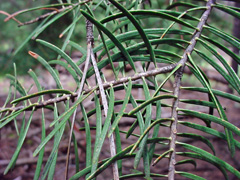
Abies concolor, photo Russ Kleinman, Mogollon Mtns., Bursum Road, Aug. 5, 2007
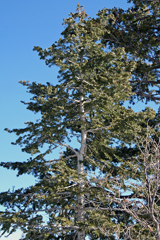
Abies concolor, growth form, photo Russ Kleinman, Black Range, Emory Pass, Dec. 10, 2008
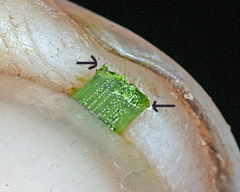
Abies concolor, 1x field macro with arrows pointing at small, lateral, superficial resin canals in cross section of needle being compressed with thumbnail, photo Russ Kleinman, Black Range, McKnight Cabin, May 13, 2009
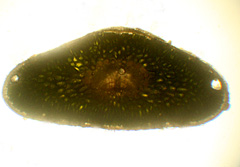
Abies concolor, 40x photomicrograph of small, lateral, superficial resin canals, photo Russ Kleinman & Karen Blisard, Black Range, Railroad Canyon, December 13, 2009
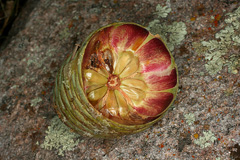
Abies concolor, cone with scales, photo Russ Kleinman, Bill Norris, Patrick Alexander, Richard Felger, Leith Young, Ed & Dorea Gilbert, Mogollon Mtns., Redstone trailhead, September 14, 2009
Back to the Index